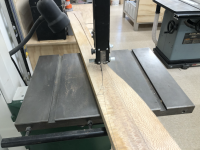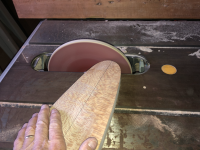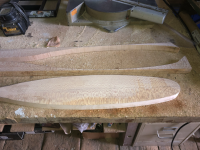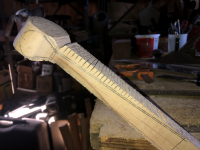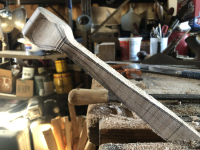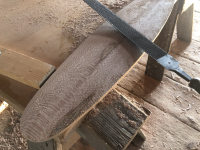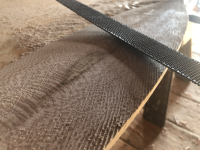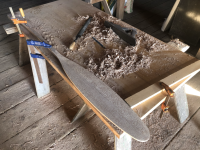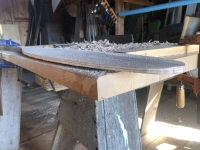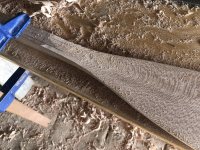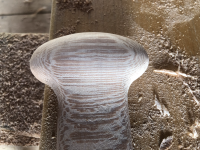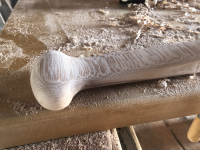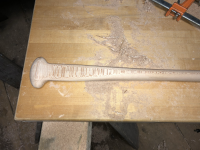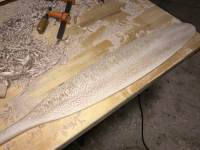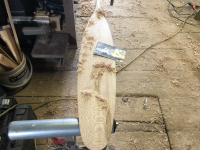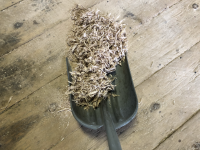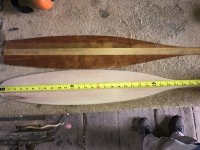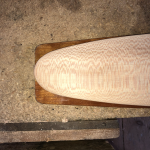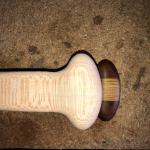I have made four paddles, two in solid cherry (one piece) and two from laminated bits and pieces. The laminated paddles, while pleasurable to use, do not appeal to me aesthetically. I think they look a bit out of place in my traditionally built wood/canvas canoes. For fun I picked up a piece of American Sycamore (Platanus occidentalis) at a specialty wood supplier near me (https://www.hearnehardwoods.com/). It has very striking figure when quartersawn, displaying medullary rays when sawn this way.
The paddle will have a narrow (5.5") blade, and a grip I have come to like similar to the grip on my Sassafras paddle. Here's my beginning effort so far. Here you will see the growth rings vertical with the medullary rays as nearly horizontal lines:
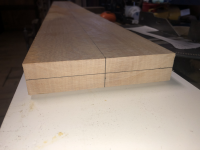
The sawn faces display the medullary ray figure: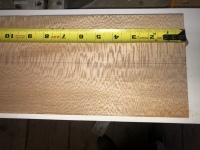
Joining the shaft lines to the blade in a fair curve using a Keuffel & Esser #6 irregular French curve. It belonged to my canoeing mentor- an engineer at Boeing Vertol. The square lines /marks ensure symmetry on both sides of the shaft.
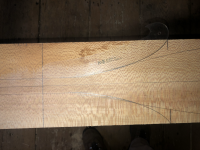
The idea was to slightly reduce the throat dimension at the top of the blade on a paddle whose profile I favor otherwise.
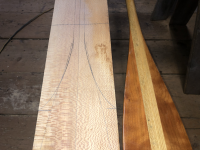
The paddle will have a narrow (5.5") blade, and a grip I have come to like similar to the grip on my Sassafras paddle. Here's my beginning effort so far. Here you will see the growth rings vertical with the medullary rays as nearly horizontal lines:

The sawn faces display the medullary ray figure:

Joining the shaft lines to the blade in a fair curve using a Keuffel & Esser #6 irregular French curve. It belonged to my canoeing mentor- an engineer at Boeing Vertol. The square lines /marks ensure symmetry on both sides of the shaft.

The idea was to slightly reduce the throat dimension at the top of the blade on a paddle whose profile I favor otherwise.


